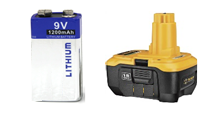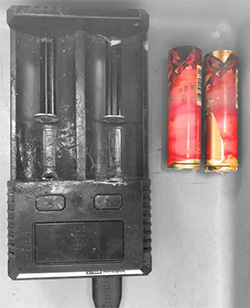
Yes, you can take spare lithium batteries, including powerbanks, in your carry-on bag but they cannot travel in your checked luggage. Lithium batteries can travel in checked luggage but only if they are in a device they provide power to and only if the device is turned off.
For information on lithium batteries travelling in a device please refer:

There are different types of lithium batteries, the two most common are:
Not sure if you can take it? Contact your airline and check with them.
Batteries can overheat and catch fire.
To date and globally, there have been hundreds of occurrences in the air involving lithium batteries, including fatal accidents. Consequently, both lithium ion and lithium metal batteries are considered dangerous goods when transported by air.
From cell phones to self-propelling baby strollers, lithium batteries are increasingly powering goods transported by aircraft.
The likelihood of such an occurrence is still rare, but the consequences are, of course, potentially catastrophic.
Read more:
Vector magazine: Lithium batteries – The good, the bad, and the ugly [PDF 254 KB]
Vector magazine: Lithium battery fires do happen here [PDF 170 KB]
ICAO electronic bulletin: Dangerous goods carried by passenger and crew
News item: TSA surveillance footage of lithium battery exploding in bag (external link)
You will be asked to relinquish all dangerous or prohibited items found in your carry-on luggage. If you refuse:
AvSec X-ray bags going onto aircraft to ensure there is nothing dangerous in them.
If you want to retrieve an item that has been removed, please contact your airline as soon as possible. The airline will dispose of items within three to seven days, so the sooner you make contact, the better your chance of having the items returned to you. For more information, see: